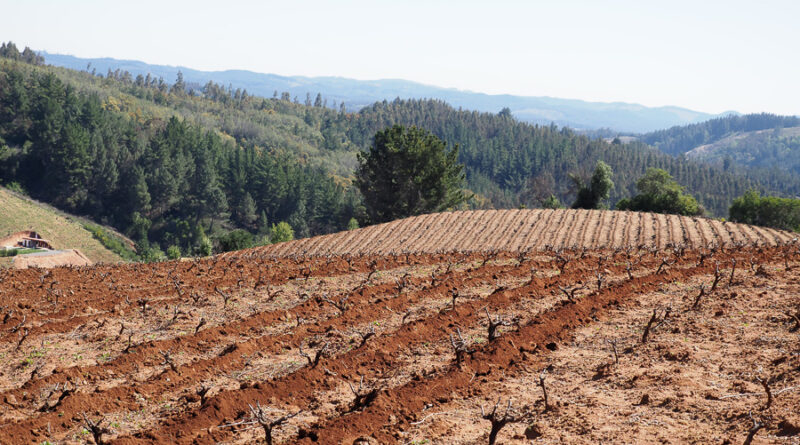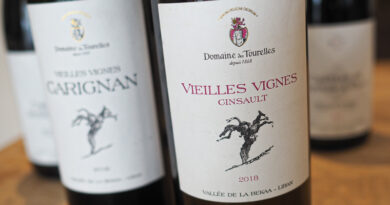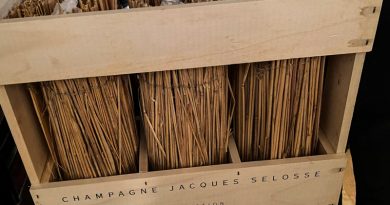Dry-grown Chile: exploring Itata, a historic region whose time has now come
The modern era of Chilean wine has been defined by French grape varieties: Cabernet Sauvignon, Merlot, Carmenère, Chardonnay and Sauvignon Blanc, with Syrah and Pinot Noir making a mark more recently. Most of these vineyards are around Santiago in the northern part of the country. But there’s another side to Chile, which speaks of its viticultural roots, and this is the journey I’m on: heading south. It’s the south where Chile has its viticultural heritage: dry-farmed vineyards planted with rather different varieties, and 500 years of winegrowing, kicked off by the Spanish colonialists.
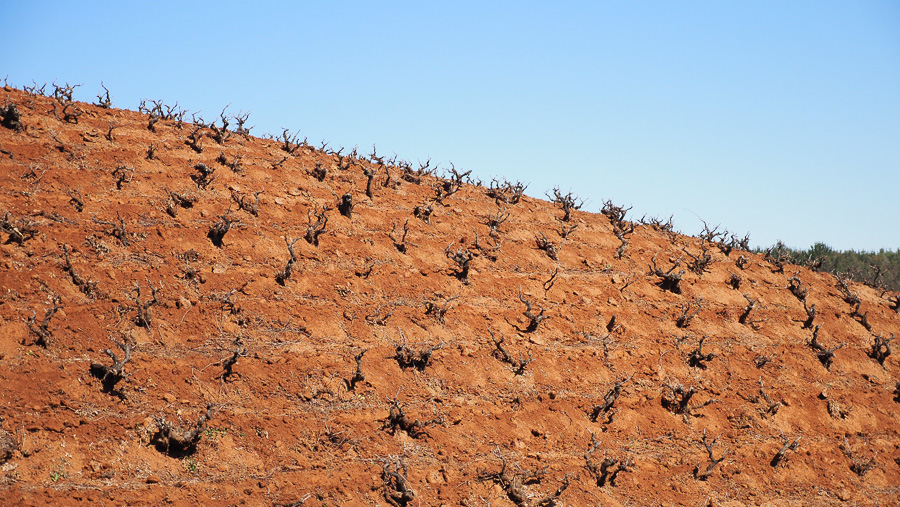
It was in a derelict winery building in a vineyard that I really began to get the wines of Itata, now one of the most exciting wine regions of Chile. There I saw an old wine press, and large wooden vats. This vineyard in Guarilihue is called Leonaro, which means where the lion lives. De Martino purchased it 8 years ago, and it’s on a slope of the coastal mountain range in Chile, 20 km from the pacific. The old winery here tells you how the wines used to be made: grapes straight from the vineyard, foot-trodden in shallow vats. Then, after pressing the developing wine transferred to larger oak vats to complete fermentation or to mature. This is a region full of history, but it fell out of fashion as Chile’s attention was diverted to French grape varieties grown in the regions north, near Santiago.
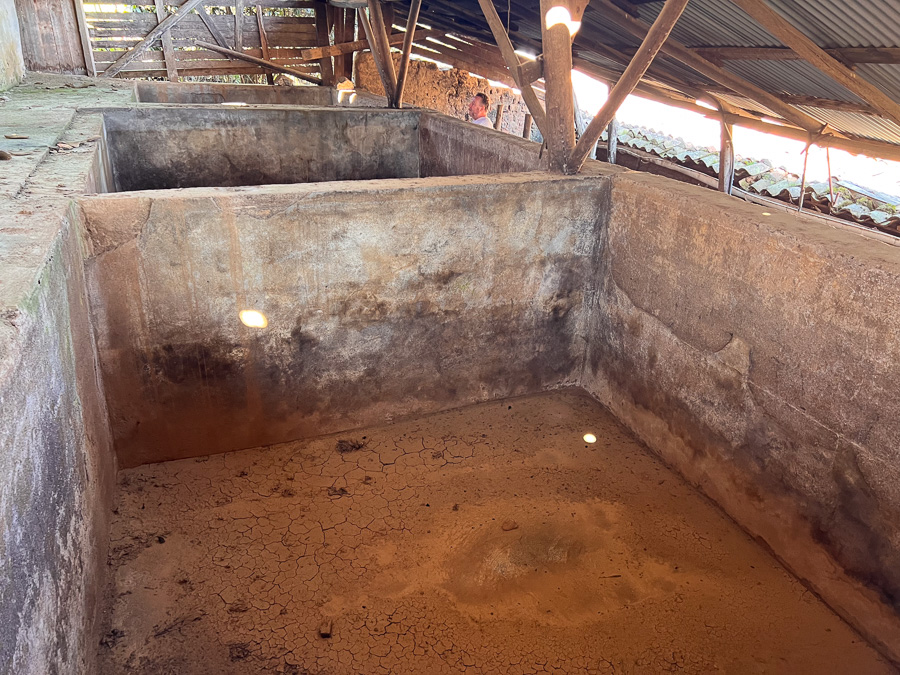
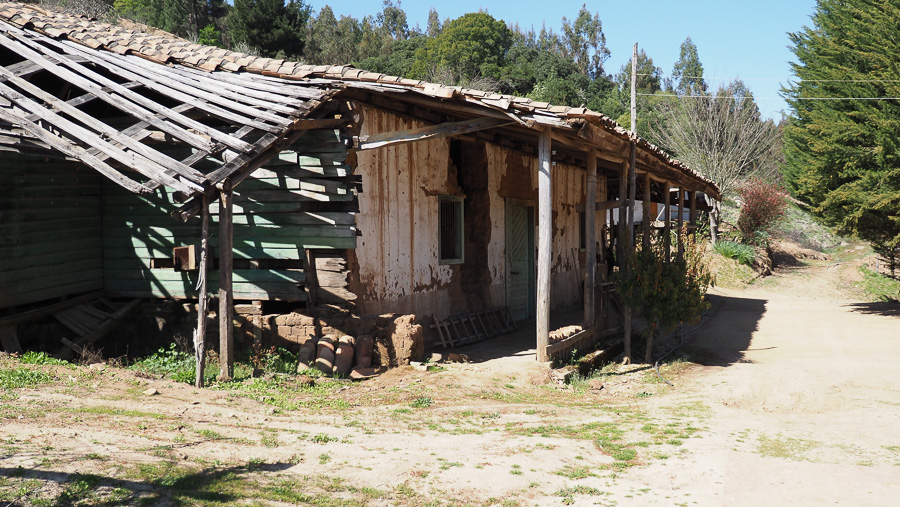
‘Itata is older than the Médoc,’ says Marco de Martino, who along with his brother Sebastien is producing some exciting wines from Itata. It’s an important perspective: grapes were first planted here for wine in 1547, which means that people were making wines here before anyone thought of doing the same in Bordeaux, arguably the world’s most famous fine wine region.
‘We are in the heartland of Chilean winemaking tradition,’ says Marco. ‘The vineyards are mostly planted to old bush vines.’
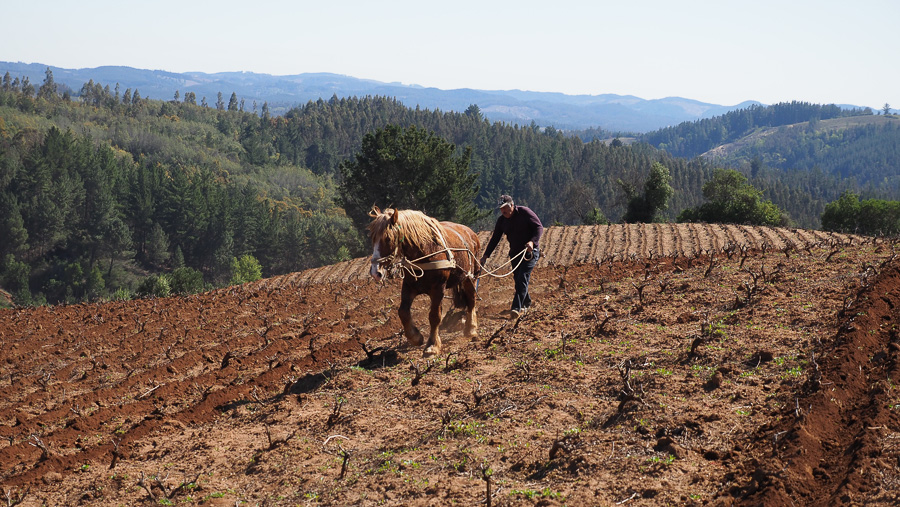
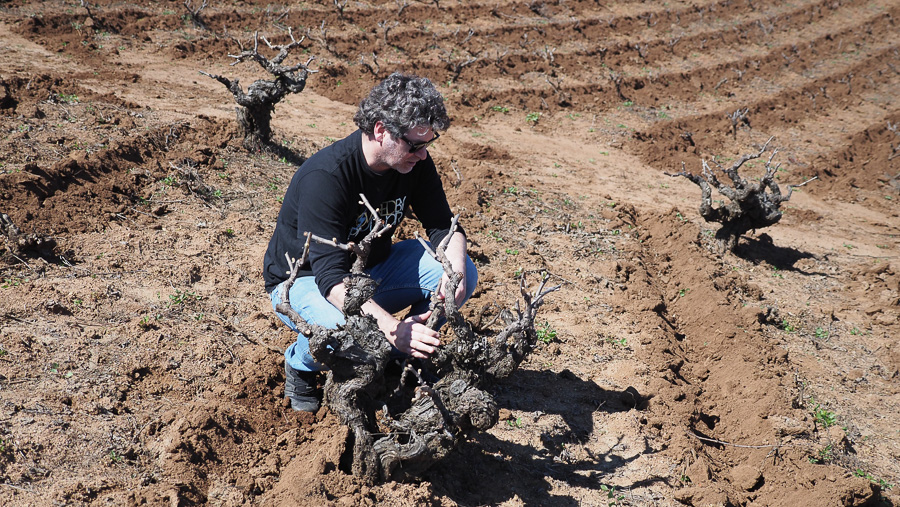
‘For Chile, Itata was one of the most important places for viticulture,’ says Nicolas Perez, winemaker at De Martino. ‘Before talking about what Itata is geographically or geologically, or the climate, I prefer to talk about the history first.’ He says that after the vineyards had been established here in the mid-16th Century, Spain sent experts out to see what was going on in Itata, because the wines here were the best in Chile and Peru. ‘This tells us the potential that was in the vines that the Spaniards brought.’
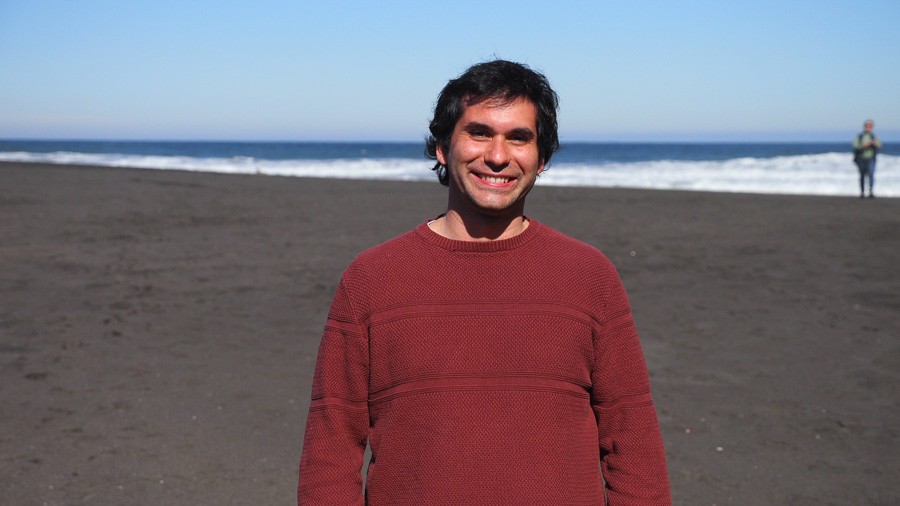
Leonaro, the new De Martino property, is 18 hectares in all and had 10 hectares under vines. The other 8 had once been vineyards but were planted with eucalyptus and pine trees. Forestry is a major industry here, but it’s not environmentally sustainable and has led to some awful wildfires in the last few years. ‘One of the first steps was putting back into shape the vineyards,’ says Marco. ‘Then we cut down the eucalyptus and pine trees, and replanted with local varieties.’
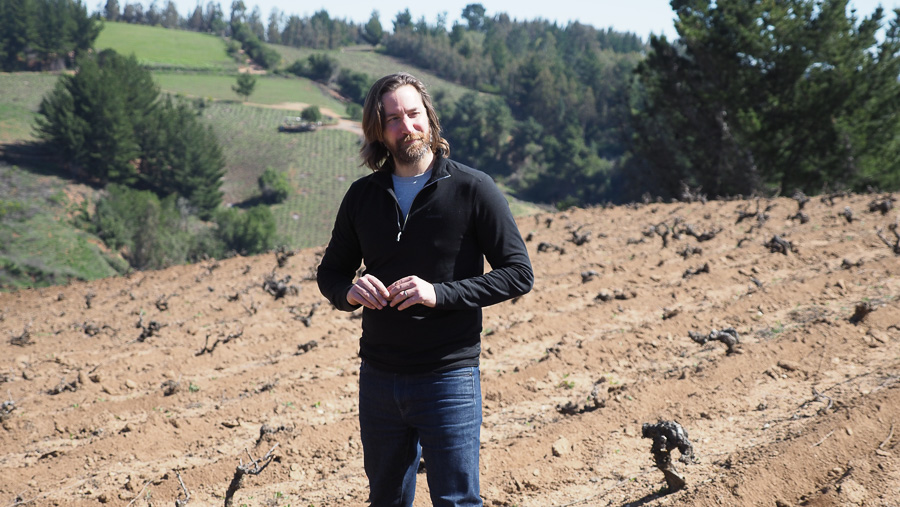
What is the strength of Itata? ‘One is tradition,’ says Marco. ‘There is a very long tradition here. The first vineyards were planted in the 1500s so it is quite a while ago. It is a region that has a long winemaking tradition. It is part of the culture of the region. He cites three interesting features. ‘We are close to the Pacific so it is relatively cool climate; we have enough rain to dry farm without any problems; and we have really old vineyards on their own roots.’
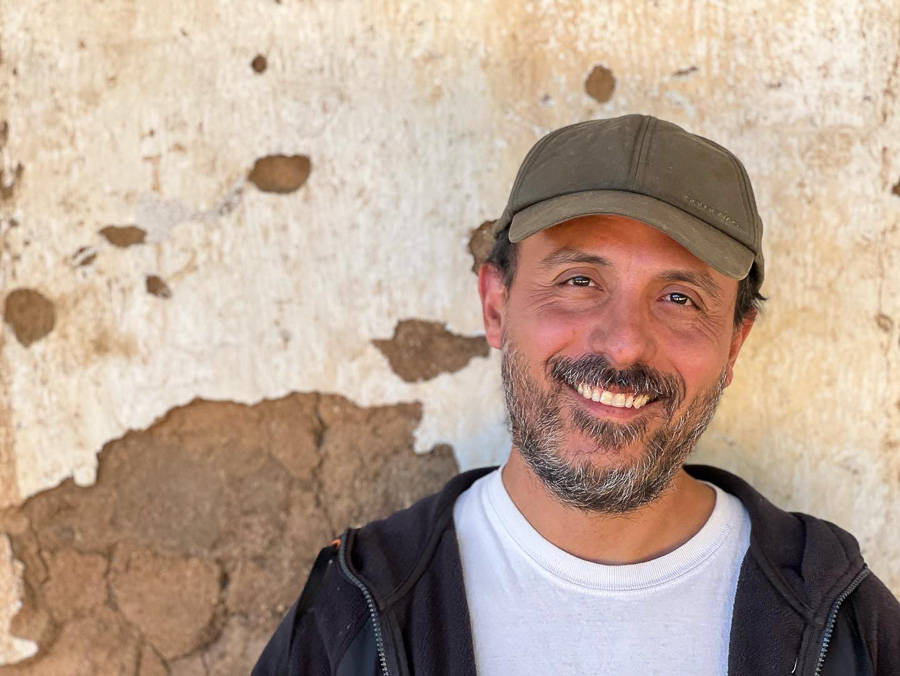
Leo Erazo is one of the most celebrated wine growers in the region, and he shared why this is such and exciting region. ‘The way the viticulture is done here is pre-industrial revolution,’ he says. ‘It is something that may be in the past but it could be something to keep looking into and learning from, and maybe applying in the future.’
One of the great advantages is that the main red and white varieties, País and Moscatel, are so well adapted to the region, having been grown here for 470 days, in terms of drought resistance and not using rootstocks. ‘People know how to work with these vineyards, and for me it has been fantastic to learn from them. It’s a unique thing, the way they work the land. You don’t get this anywhere else in the world.’
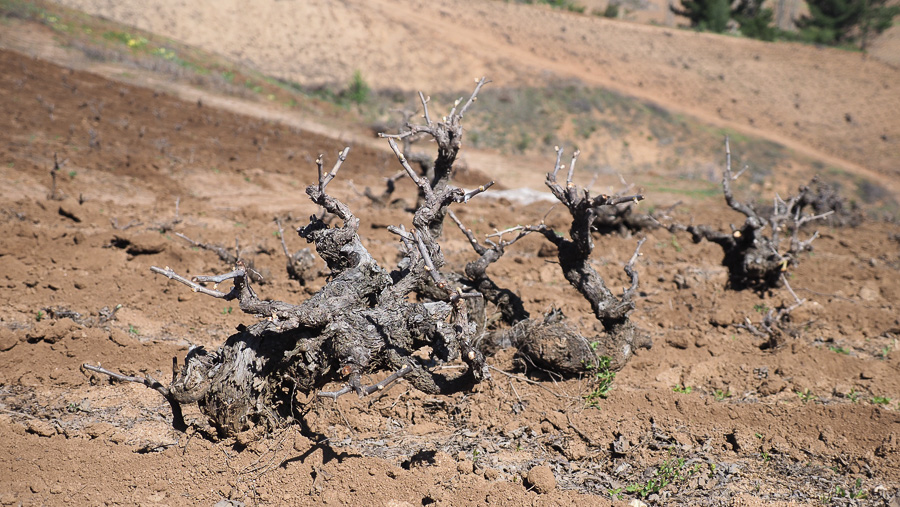
País is a remarkable variety, and is back in favour after a spell being consigned to making simply cheap bulk wine. Viña Bouchon winemaker Christian Sepúlveda used to make wine from Colchagua to the north, but he’s now working from Maule southwards, which includes the regions of Maule, Bío Bío and Itata, collectively referred to informally as dry-grown Chile, and officially as the Secano Interior. ‘We have been making wine for five centuries here,’ he says. ‘The first influence was the Spanish who brought mainly Listán Prieto.’ This is the grape also known as País, or Mission (in California), of Criolla Chica (in Argentina). At the time most of the boats heading this way from Spain stopped in the Canary Islands. ‘There’s no Listan Prieto in mainland Spain but there’s some in the canaries,’ says Sepúlveda.
In 1910, for red grapes Chile had just 15% Cabernet Sauvignon but 85% País, with all the Cabernet Sauvignon planted in Maule and further north. In 1939 There was a big earthquake in the south, and in its wake the Chilean authorities decided to bring in some more varieties. So Carignan and Cinsault also came south to join País.
The Secano Interior region consists of Maule, Ñuble (the name for administrative region that includes Itata) and Bío-Bío. The common features are granite-based soils, soft sloping terrain, and a high concentration of old vines. The soils tend to be nutrient poor, and there’s no water here for irrigation. Fruit production is concentrated in Chile’s Central Valley where irrigation water is available, so they left the old vineyards here, which is why there’s a concentration of old vines in these regions.
Altogether, there are 17 653 hectares dry-farmed in Chile
- 8460 ha in Ñuble (Itata)
- 7323 ha in Maule
- 1093 ha in Bío Bío
And there are 15 021 hectares of head-trained bush vines.
- 7755 ha in Ñuble
- 6072 ha in Maule
- 980 ha in Bío Bío
The different varieties in the Secano Interior
- Pais c. 10 000 ha but probably more as not all is declared. Most is in Maule and Itata
- Muscat c. 4000 ha, most in Itata
- Carignan c. 800 ha, mainly in Maule
- Cinsault 800 ha, mainly in Itata
‘In general, these vineyards are farmed by farmers not wineries,’ says Christian. ‘They have mixed agriculture with grains, livestock (mainly sheep), horticulture and viticulture. They made wine to bring people to work on the land. In the Secano Interior they worked the soils. In Chile there are 3-4 months with rain, then six months dry. You need to work the soil: open it, get rain and close it, keeping the water.’
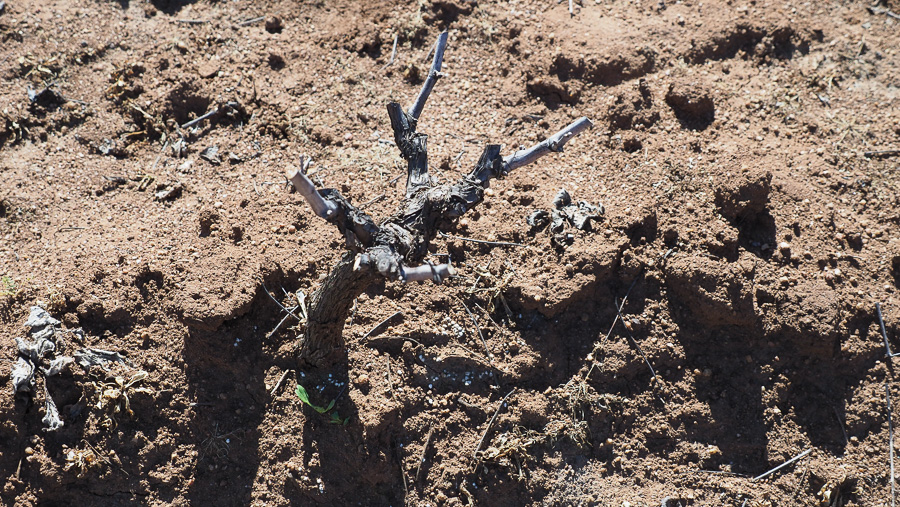
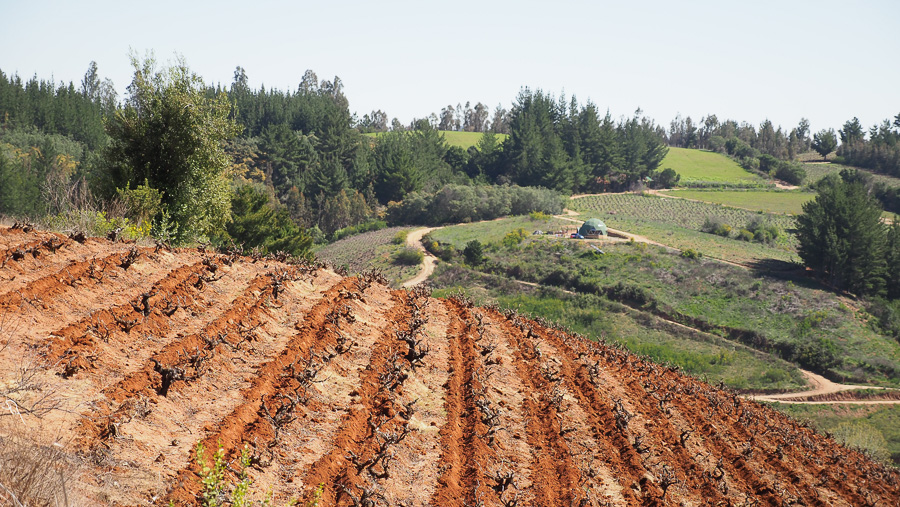

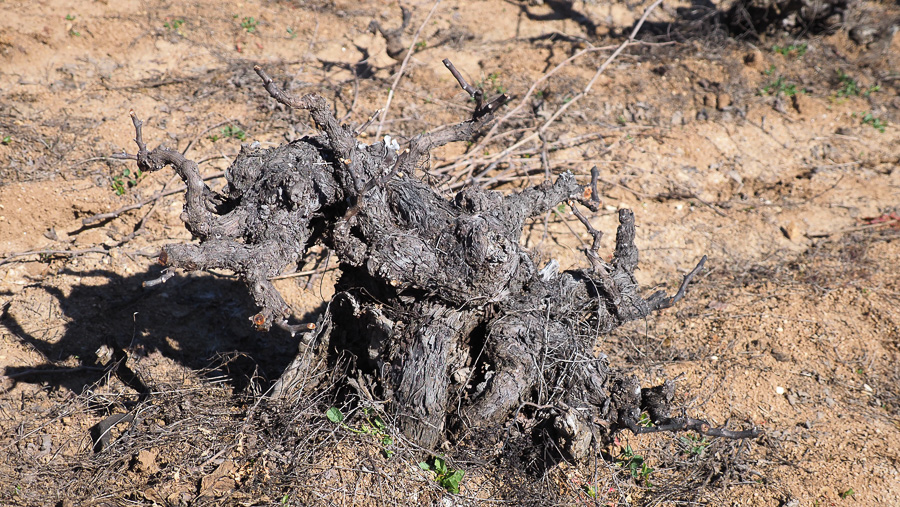
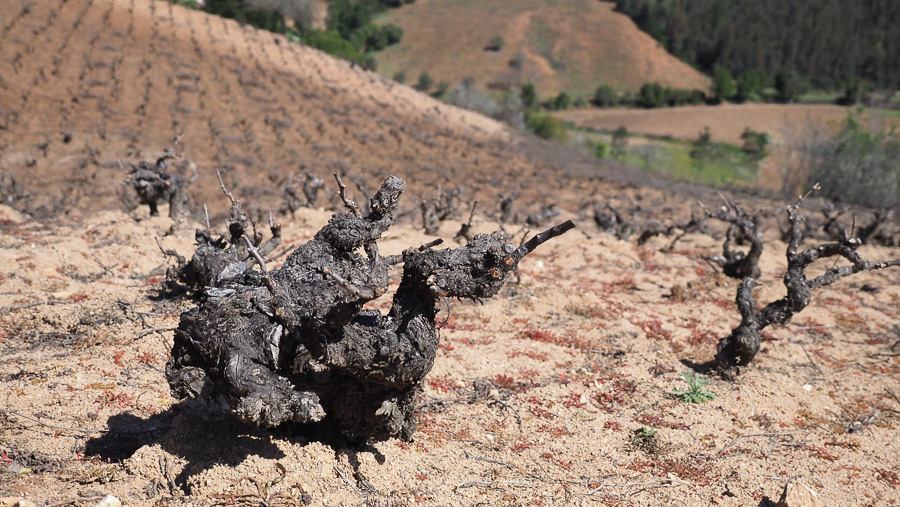
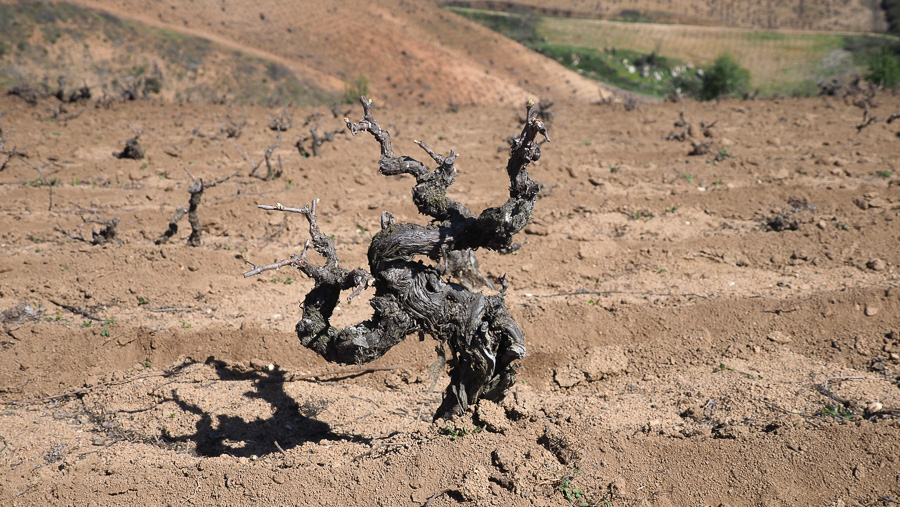
This requires hand labour, because of the layout of the vineyard. But País had been selling for just $100 per ton, so it’s not profitable to farm this way. As a result, people began pruning longer (for bigger yields), abandoning soil work, and using herbicides and more aggressive plant protection products. ‘If you use herbicides you get maturity with yellow leaves,’ he says. ‘For me when you are dry farming it makes a lot of difference – the maturity is amazing.’
As we stand in the Leonara vineyard we see three horses working the soil. Working the soil isn’t really in vogue in these regenerative times, but here it is done for the reasons Christian has mentioned: once to open the soils to receive the winter rains, then a second time to close them just before the start of the growing season, to keep the moisture. Here, this makes sense.
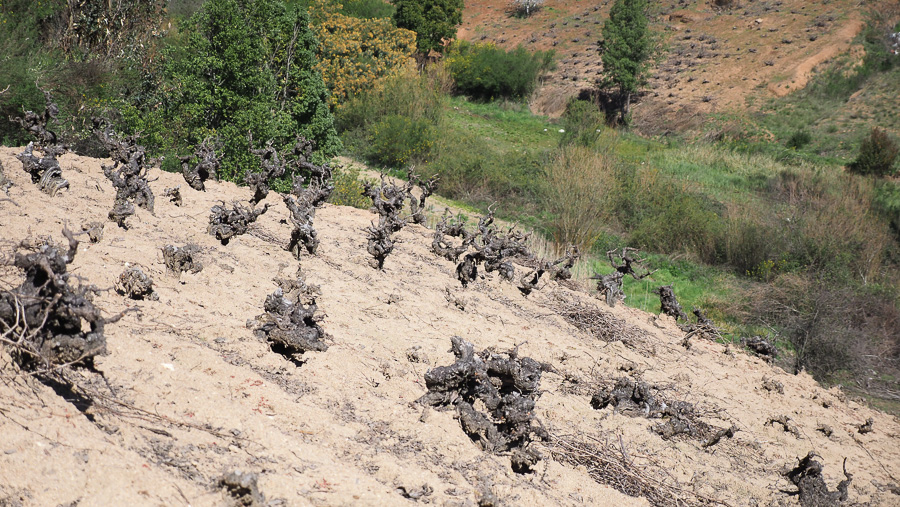
So if Itata is so great, why did it fall out of fashion? ‘Chile developed vineyards up north and everything was about Cabernet and Bordeaux varieties,’ says Leo Erazo. The Itata wine was sent up north in bulk. ‘It was transported from here in pipas, 600 litre barrels, to the Conception area,’ says Leo. ‘Then it became cheap bulk wine because the vines can produce a lot. Fertliization was developed so you could have 20 kg per vine. Quality and quantity are never very close to one another. It went down and down. Then when they closed the mines, everyone was caput.’ The demand for lots of cheap wine went down significantly. ‘Today it is still caput’.
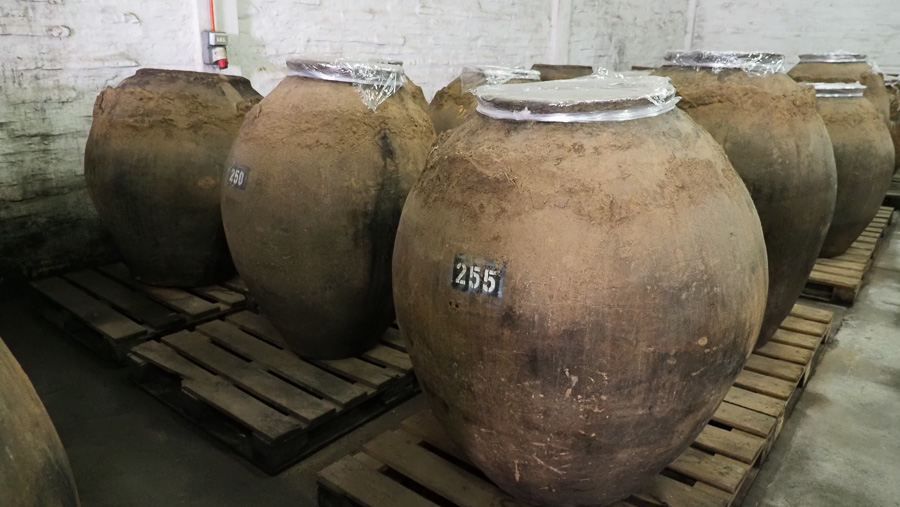
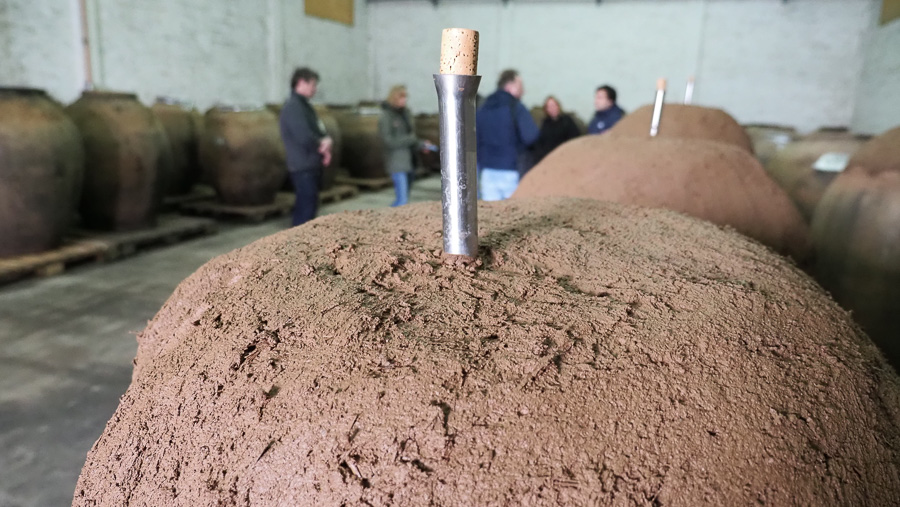
But things are changing. ‘Now the young guys are moving in. 10 years ago everyone was 70 or so years old. It is something but it is still small. We have 4000 hectares here and every year there is less. There is the market. The problem is how do you get these young people to taste wine, and taste wine from other places to teach them the taste of other wines? Otherwise you are here in Chile and convinced, like I was, that Cabernet is the best and País is crap. Your palate accommodates to these big wines. Here the wines are more subtle. They are not big wines: they are structured but delicate. When they start tasting Morgon, Etna and other kinds of wines more related to the styles of wines we make, they open their eyes.
THE WINES
Leo Erazo
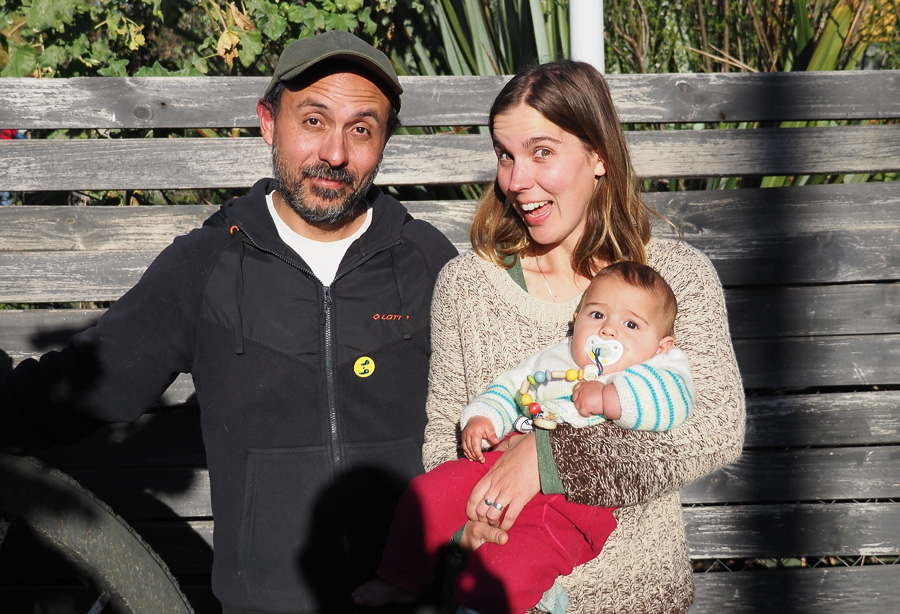
Leo is one of the stars of Itata, and is a particular fan of Cinsualt: he makes seven of these. He uses 20-30% whole bunch for reds and works naturally.
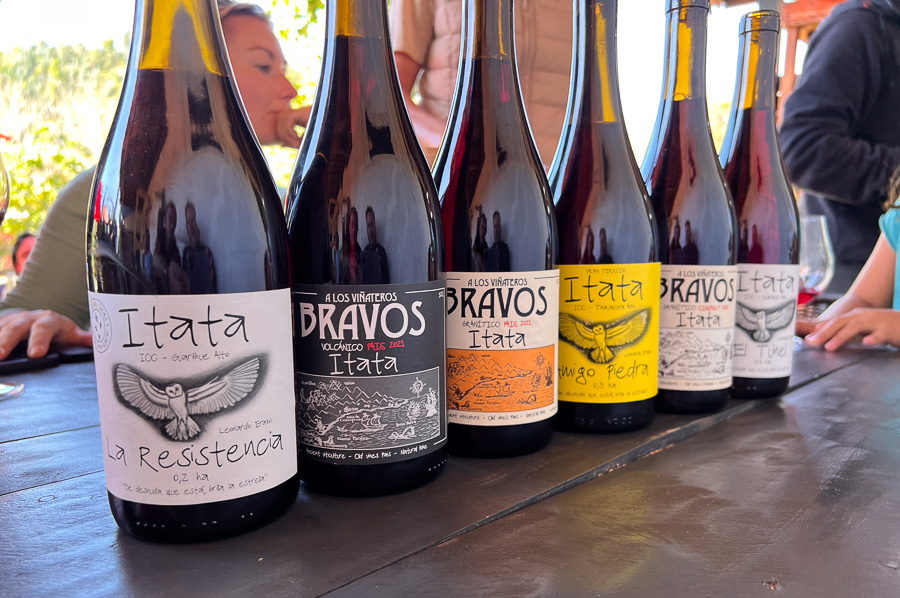
Pipeño Branco 2021
Moscatel and Torrontel, which is Argentina’s Torrentes, which is late-ripening here and adds freshness. Skin-fermented and basket-pressed, and aged in concrete tanks. Fresh and juicy with nice floral grapey notes and a nice acid line. Vivid and fun. 90/100
La Ruptura 2019
Skin-fermented Muscat. Concentrated, fine and mineral with nice intensity. There’s structure here, but it’s fine grained, with some table grape richness and fine citrus. Lovely freshness and also nice texture, with a hint of mint on the finish. 93/100
Pel de Arcia 2021
Moscatel, fermented in clay, whole bunch, then after a few months pressed to concrete. Lovely density and intensity here with rich, bold melon, grape and pear fruit with some spicy structure and a hint of tea and mint. So lovely. Rich and expressive. 94/100
Pipeño Tinto 2021
12.5% alcohol. Cinsault from the lower part of the vineyard that’s more soil and less rocks. Two or three weeks on skins in open fermenters, then goes to concrete. Juicy and fresh with lovely vibrant cherry and plum fruit. It’s delicious and juicy with a hint of olive and pepper, with lovely vibrancy. Easy and delicious, with some sweetness even though it’s totally dry. Pleasure with a touch of seriousness. 92/100
Bravos Granítico Cinsault 2021
Same winemaking as the Pipeño. 60 year old vines in the hills. Vibrant with crunchy raspberry fruit. Vibrant and crunchy with lovely purity and bright acidity. This has amazing energy and purity with some green hints adding to the sense of freshness. Lots of detail here: a lovely wine. 94/100
El Túnel 2021
Cinsault, a bit higher up, closer to the rock, just 40-60 cm of topsoil. Red granite with lots of quartz. Concrete. Light in colour. Smoky, spicy, wild strawberry on the nose with some fine herbs. The palate is light and really elegant with fine red fruits and a sappy green hint. Such precision and elegance here: very fine. 95/100
Amigo Piedra 2019
Cinsault from near the top of the hill where there is very little top soil. Pale red in colour. This is beautiful: there’s elegant, fine-grained tannin and amazing red fruits and red cherry. Such a lovely, elegant red fruited wine. So juicy and pure with fine spices and lovely presence in the mouth. Fine and refined. Utterly beautiful. 96/100
Bravos Volcanico Pais 2021
Volcanic sand from nearby the river. Very bright and expressive with pepper and dried herbs and lovely vitality. There’s some richness here on the mid palate showing silky texture and herb-laden strawberry and cherry fruit. There’s a smoky, spicy edge here which frames the rich fruit beautifully. 94/100
Bravos Gránitico 2021
Granitic soil: this vineyard was first planted in 1798, and some of the vines date back to then. This was made to show that Pais can actually show terroir – it can translate the place, whereas people used to think it just made bulk wine. This is fresh and vital with a mineral, spicy undercurrent with lovely direct fruit. Such a lovely expression of Pais showing some nice structure. 95/100
La Resistencia 2021
Pais from the top of the hill, with very thin top soil. Lovely aromatics. Finely spiced with some sappy, detailed raspberry and cherry fruit. The palate is bright and also textural with a lovely silkiness as well as some fine-grained tannic structure. This is really fine and expressive with a sappy edge to the elegant fruit. Such a beautiful wine. 95/100
De Martino
De Martino are a winery that hail from the north, but have also switched their focus down south. They are making some lovely wines from Itata. They say that there are three schools for white winemaking here: super-reductive, orange and then oxidative. They are more oxidative.
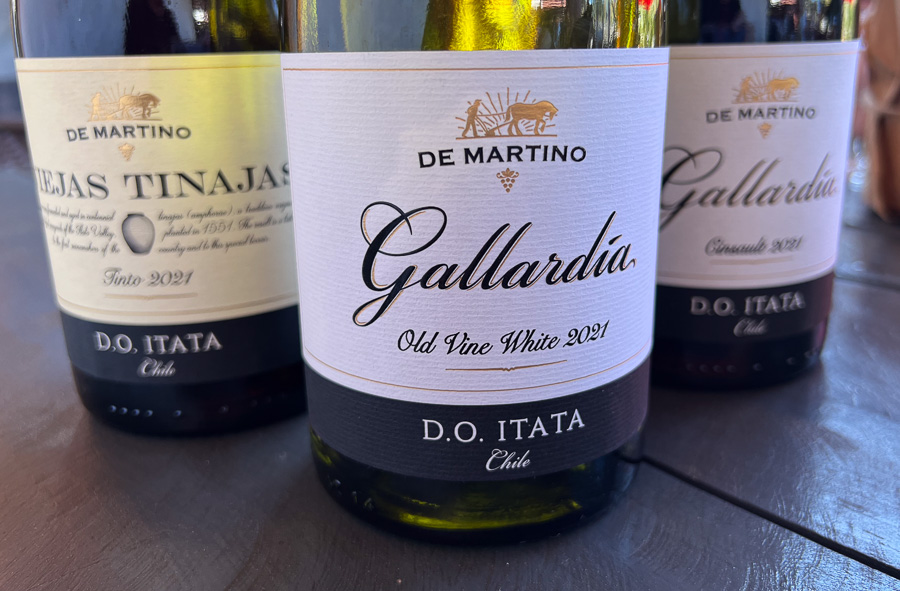
Gallardia Old Vine White 2021
85% Moscatel and 15% Chasselas (Corinthia). They taste the grapes to decide which wines they go to. This is made from the grapes that don’t go to Viejas Tinajas. Highly aromatic with lovely grapey fruit. Juicy and fresh, but with some richness. Very fruity and grapey with a hint of mint. Pure and expressive with a nice spicy flourish on the finish. 91/100
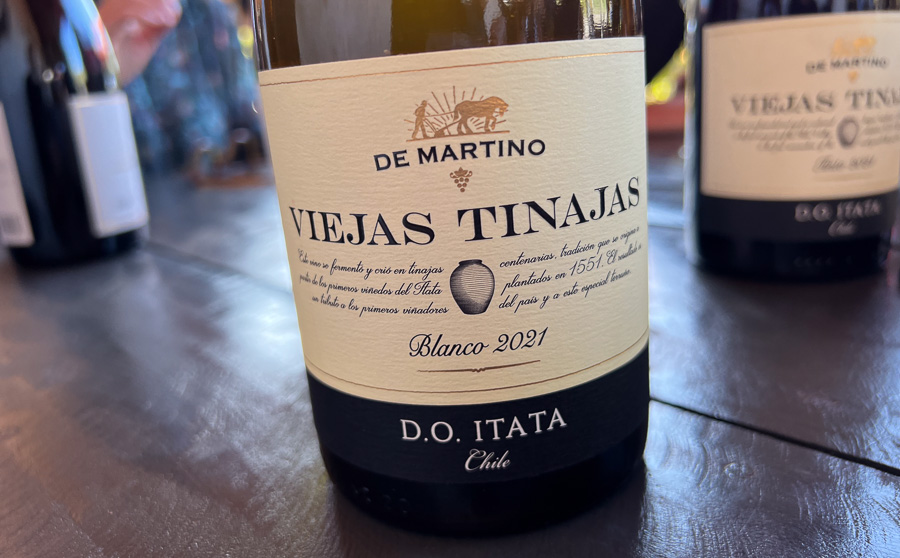
Viejas Tinajas Blanco 2021
85% Moscatel and 15% Chasselas. Harvest together and conferment. Destem. The Muscat has big berries and the Chasselas are super-ripe and smaller. Fermented on skins and left on them for 6 months. So aromatic with lovely grapey notes, as well as some pear and passionfruit exoticism, and a bit of chalkiness. The palate is bright and has some lovely salty notes and a fine chalky texture. Lovely balance with a hint of aniseed on the finish. 93/100

Gallardia Tinto Cinsault 2021
Stainless steel. Fine aromatics with some cinnamon and spice, as well as sweet cherry and strawberry fruit. It’s really bright and vivid with nice freshness and purity, with fine-grained tannins. Supple and delicious, with drinkability and some warmth on the finish. 93/100

Viejas Tinajas Tinto 2021
100% Cinsault. This is fresh and textural with sweet cherry and raspberry fruit, some pear richness, and then lovely fine-grained structure. Such a lovely stony, slightly earthy undercurrent to the pure redcurrant, cherry and plum fruit. Shows brightness and precision, but also some lovely texture. Real finesse and purity here: so fine and focused. Just beautiful. 95/100
Alice Lestrange
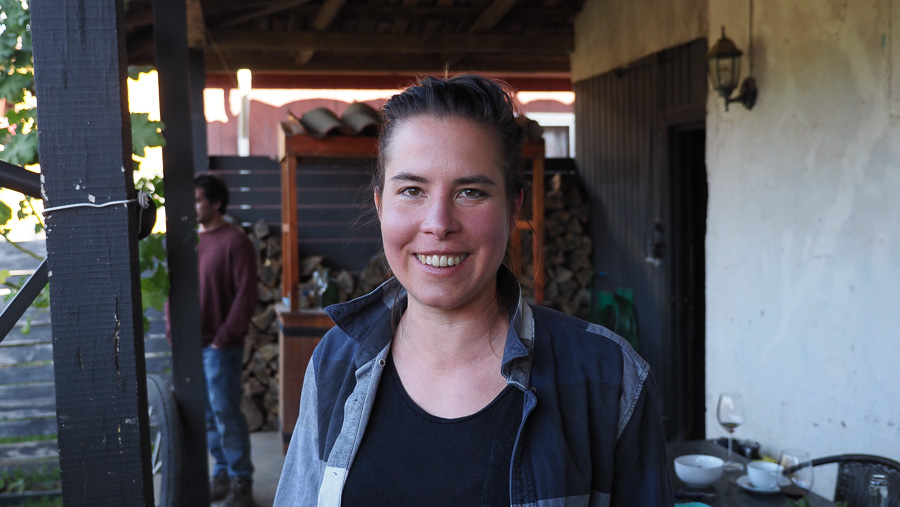
Alice hails from Australia, and came to Itata in 2019 to do vintage, before moving here in 2020, founding her label Strange Grapes. It’s a region she got to know as a buyer of low intervention South American wines. Guarilihue is now her home. She’s a natural wine fan and supports those who are trying to work with less intervention. ‘Itata is full of glyphosate and over-tillage,’ she says. Alice is working with three growers now. ‘I went through a lot before I found people who weren’t lying to me,’ she says.
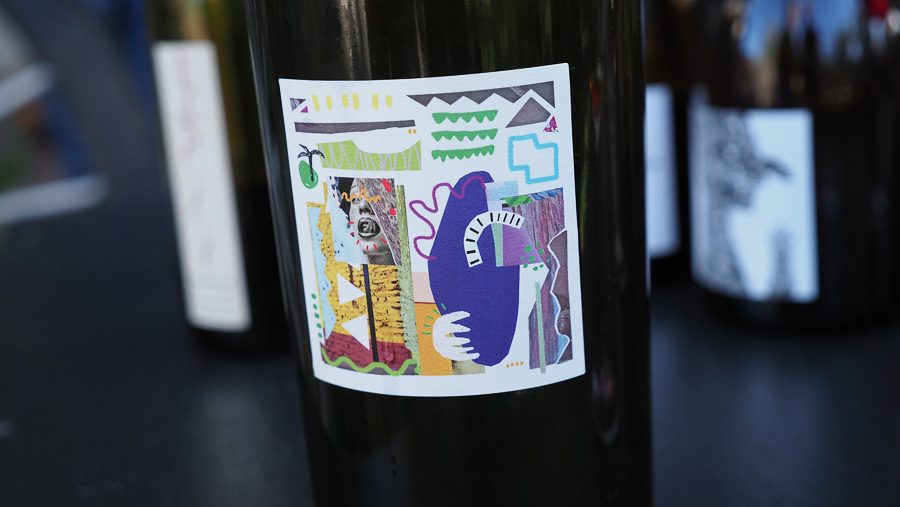
Pipeño Pastiche 2019
This is 60/40 Moscatel and Chasselas. Moscatel is one year on skins, while Chasselas is fermented with carbonic maceration and then pressed to barrel. Supple, fresh and vivid with nicely textured, grainy detail to the fruit. Real delicacy with a hint of honey and nice finesse. This wine shows harmony. 93/100
Pipeño Pastiche 2021
10.6% alcohol. 100% Moscatel. Complex, lively, grapey and saline. This is mineral with nice acidity and a bit of structure. Such lovely wine showing lemon, mandarin and dried herbs, as well as some mint. Very fine with good detail. 93/100
Daniela & Pablo Padredos at Vinos Mingaco
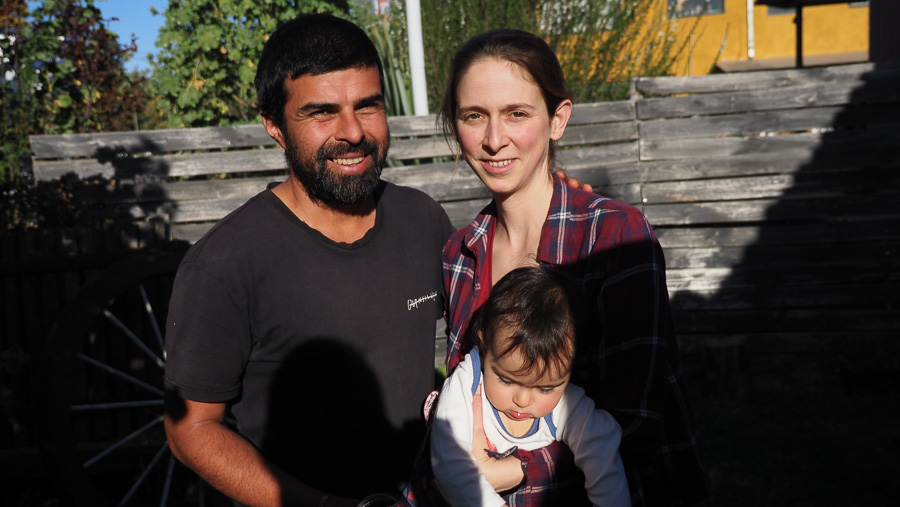
Pablo Padredos says, ‘the neighbours walk past the vineyards and say that we are lazy: there is stuff growing there.’ They choose not to turn the soil, but work no-till in the vineyards.
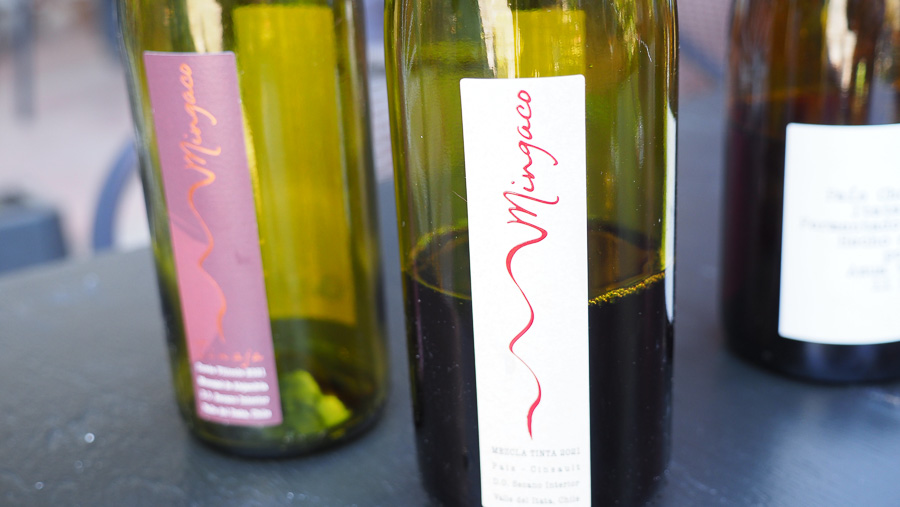
Mingaco Moscatel de Tinaja 2021 Itata, Chile
11.8% alcohol. This is from the home farm and is made with no added sulfites. They farm no-till without herbicide. One part has been farmed regeneratively for 12 years, the other part for 7 years, and this is a release of just 100 bottles made on skins (for 4-5 months) in amphora. Complex citrus fruit nose with a raisiny edge and notes of grape and baked apple. Intense on the palate with high acidity and nice spicy complexity. Deeply coloured but showing amazing freshness and minerality. It’s such an interesting wine. 94/100
Mingaco Mezcla Tinta 2021
12.2% alcohol. This is a blend of País and Cinsault, cofermented on skins for 10 days and fermented in old oak. Supple, fine and expressive. Grainy with nice detail. Has brightness and also some supple cherry and strawberry fruit with nice tension and balance. Fine and juicy. 94/100
Viña La Fábula de Guarilihue

Cinsault 2021
Fermented in plastic bins for 7 days the aged in used oak for four months. Sweetly fruited and juicy with strawberry and raspberry fruit. Supple and very drinkable. 91/100
2022 from concrete egg: juicy and bright with grippy raspberry fruit. Sappy and detailed with nice grip. Supple and fresh and very primary. Vivid. 90-92/100
Moscatel 2021
24 h maceration, then fermented in tank. Grapey and fresh with citrus and mandarin notes. Some minty notes with nice citrussy notes. Really expressive with nice detail. Nice tension. 91/100
Viña Vera Wine
Tasted with Ronald Vera.
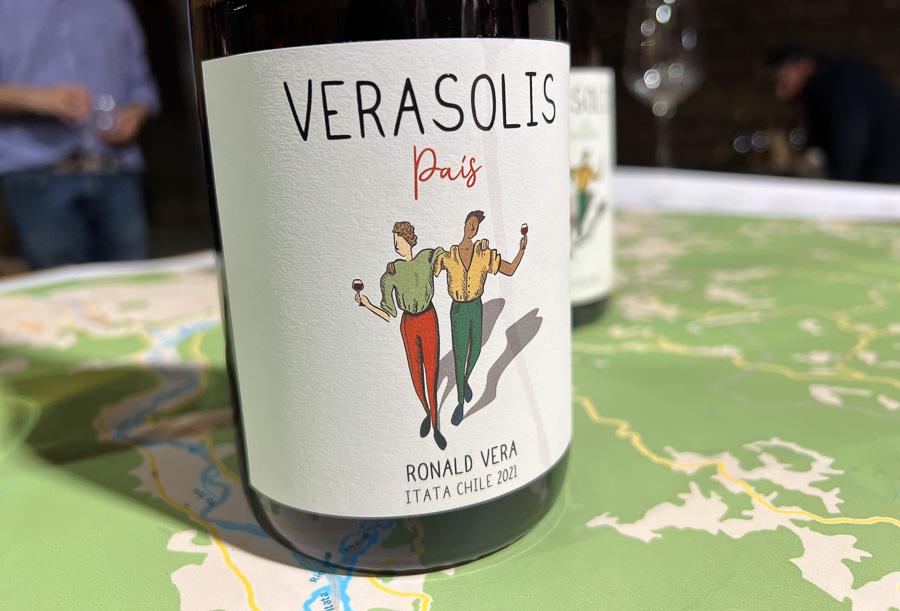
Vera Solis Semillon 2021 Itata
Native yeasts, no additions. Stony and appley with pear fruit. Grainy with a savoury edge. Chalky and quite oxidative with some lemony acidity. 88/100
Vera Solis Pais 2021 Itata
Vivid and bright with nice cherry and raspberry fruit. Has a grainy, chalky structure, with a bit of tannin. Nice freshness here, with some crunch. Delicious. 92/100
Viña El Guindo
Pablo Solis
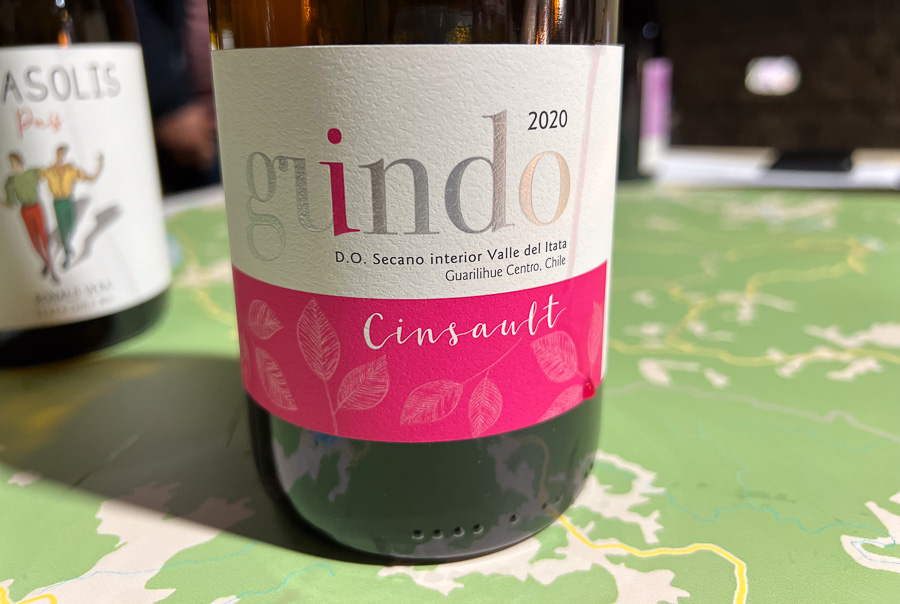
Guindo Cinsault 2020
Part of the vineyard is over 100 years old and is surrounded by cherry trees. Fresh, vivid and minty with nice direct fruit. Taut and linear with nice spicy hints. Has some grippy tannins here, some dried herbs, and also some firmness on the finish. Herbal and vivid. 89/100
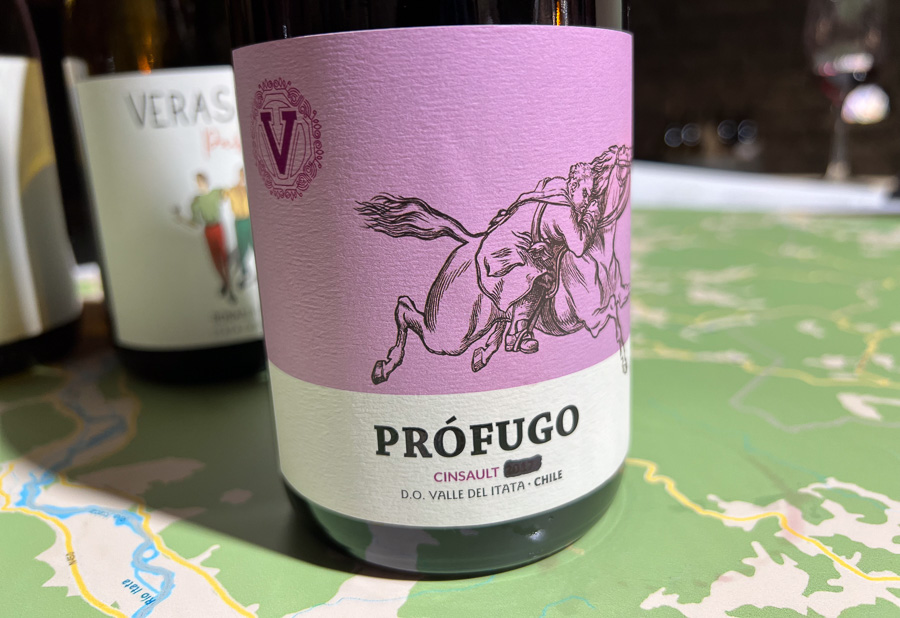
Prófugo Cinsault 2021
13% alcohol. Cinnamon and ginger on the nose, with sweet cherry and plum fruit. Juicy, vivid and bright with some peppery hints. Lively and juicy with lovely red fruits and a hint of mint. Such purity. 91/100
Pino Roman
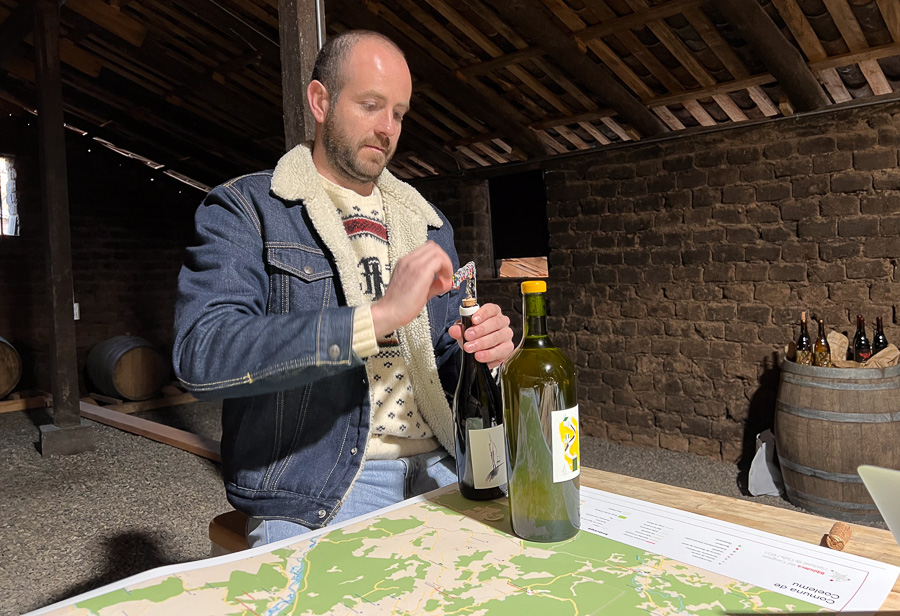
Ignacio Pino came to Itata in 2018 and began to make his own wines here after experience in Portugal, New Zealand and California.
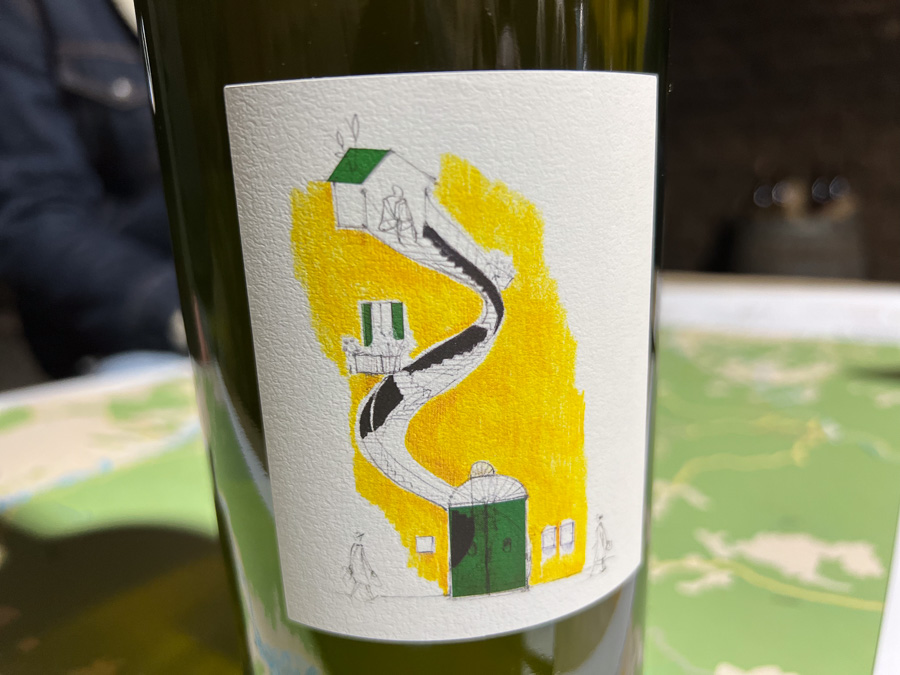
Chasselas 2021
From a really cool area in the region, closer to the sea. Fermented in tinajas, 30% whole bunch on the skins. Three months maceration. Racked to stainless steel, with 25 ppm sulfites prior to bottling. Chalky and grainy with nice citrus and pear fruit as well as a bit of clay and mineral character. Slightly salty. 94/100
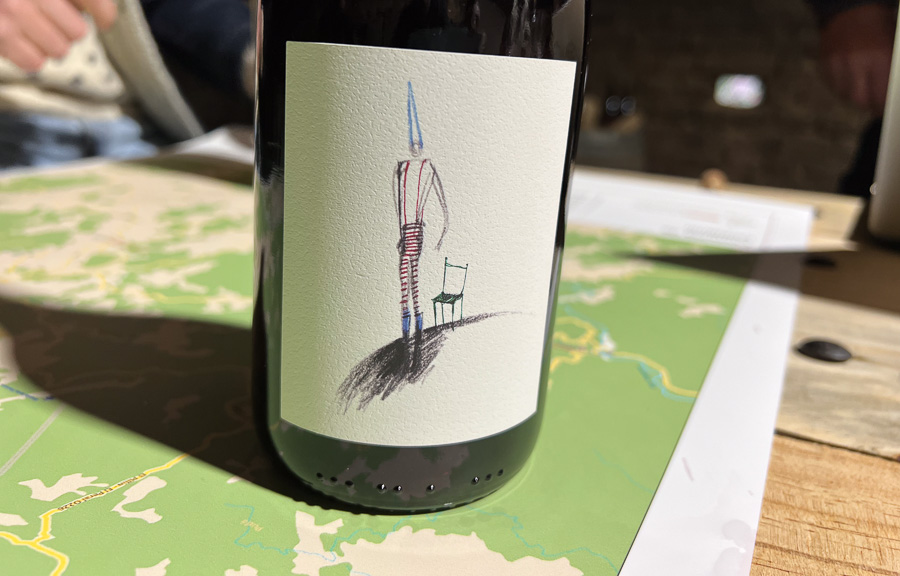
País 2021
11.5% alcohol. 50% whole bunch, low intervention. 20% vat bleeding to get more concentration. No punchdown: infusion. No additions. 25 ppm sulfites just before bottling. Juicy and fine with fresh cherry and raspberry fruit, with some peppery notes. Nice acidity with some grip on the finish. Very expressive with nice intensity. 93/100
Viña Madrones
The three siblings behind this project used to sell bulk wine, and began bottling in 2018. They hired a winemaker to help them. Vale Madrones poured the wine.
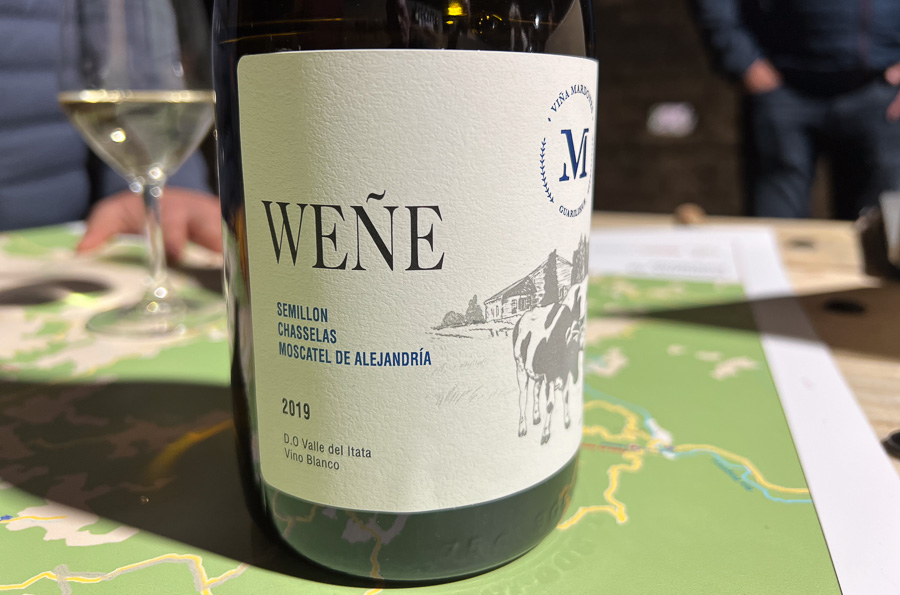
Weñe Semillon Chasselas Moscatel de Alexandria 2020
Aged in untoasted oak. Chalky mineral edge to the citrussy nose. Fruity palate with a distinctive chalky, mineral character, quite stony. Grainy, with a dry herb edge. Lovely weight here: a distinctive wine. 91/100
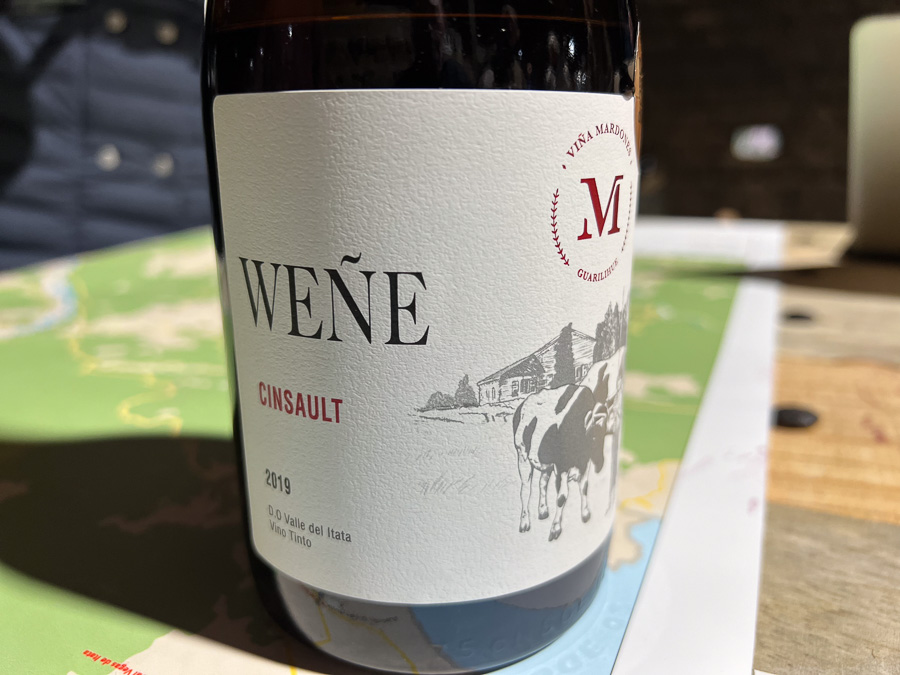
Weñe Cinsault 2020
Aged 18 months in concrete egg. 20% whole cluster. Sappy and detailed with a stony edge to the sweet cherry and plum fruit. Very expressive with lovely elegant fruit: it’s quite ripe and broad. 93/100
Zaranda

Juan Ignacio Acuña and Mary Aracibia started making wine here in 2011. He trained as a chef and sommelier in Santiago and lived in Paris for a while. ‘I was tired of cooking and wanted to try the wine industry.’ They have no kids but five dogs and enjoy living on the farm. They are also about to get their organic certification.

Semillon 2020
Stainless steel fermentation on skins. 76% Semillon, 24% Gewurztraminer. Bright, lively and structured with floral pear and citrus fruit, as well as some grapey notes. Fresh and intense with good acidity. Bright and pure with fine grained structure and nice grape and citrus characters. Fine. 93/100
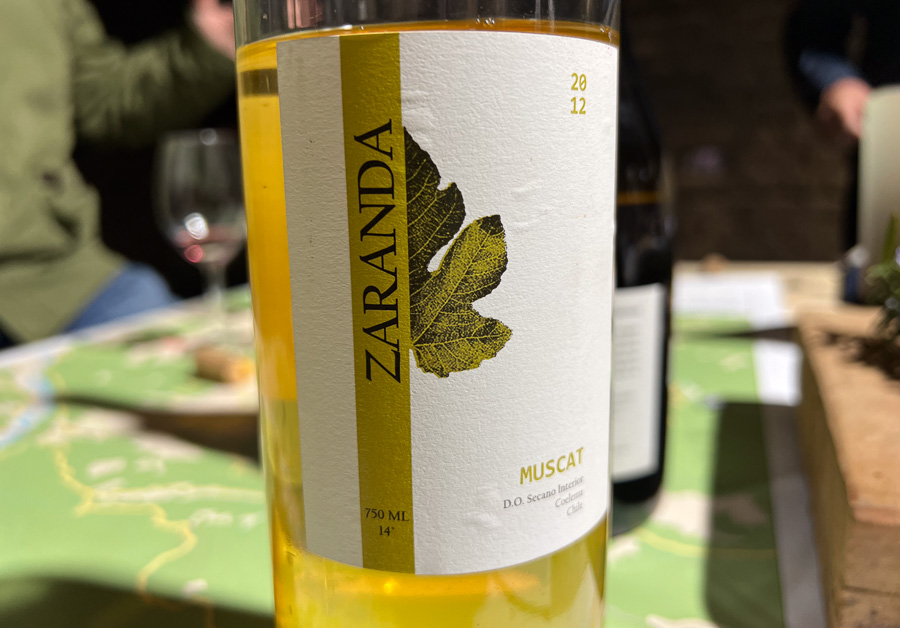
Muscat 2012
Debut vintage. Lovely stuff. Minty and bright with grainy structure and apple and table grape notes. Nice sweet grape and pear fruit with some mineral hints, but also some richness. Lovely. A hint of TDN from ageing. 92/100
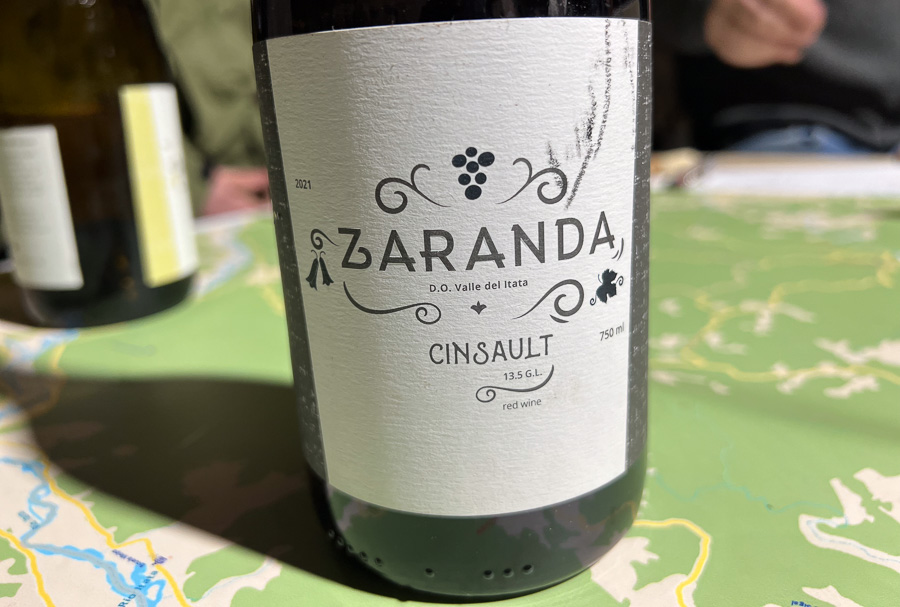
País 2021
Sweetly aromatic and fresh with sweet cherry and plum fruit. Has some flesh with sweet cherries and raspberries, and nice focus on the fruit. Very stylish. Sweet fruit to the fore. 92/100
Jorge Cotal
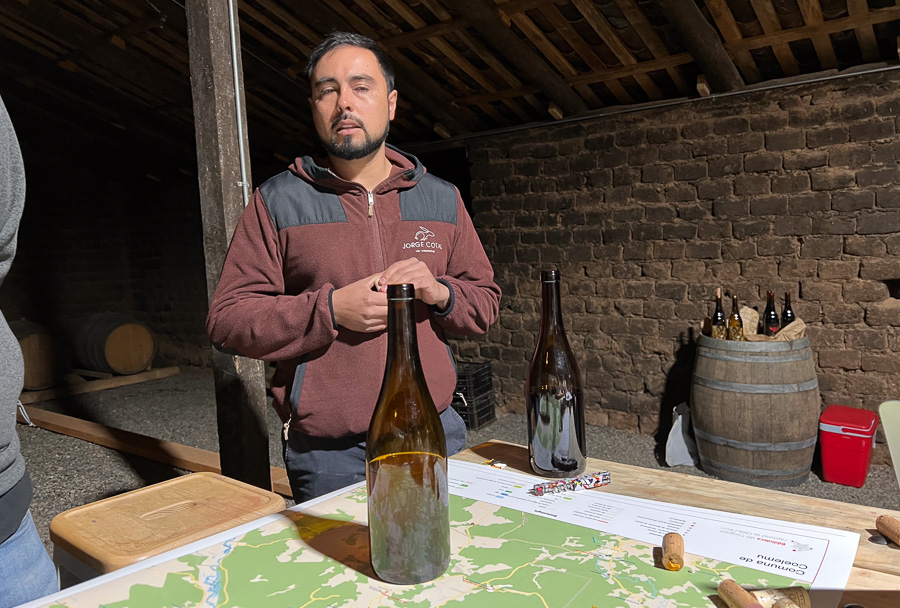

Tenca Inés Torrontel Natural Orange Wine 2021
6 months skin maceration, no added sulfites. Cloudy colour. Highly aromatic with grapey notes, some citrus pith and lime oil. The palate is vivid, pithy and grapey with some spicy notes. Quite intense with a sour, slightly bitter limey finish. Lots of interest here: a very direct with with real intensity. 93/100 (Just 800 bottles made)
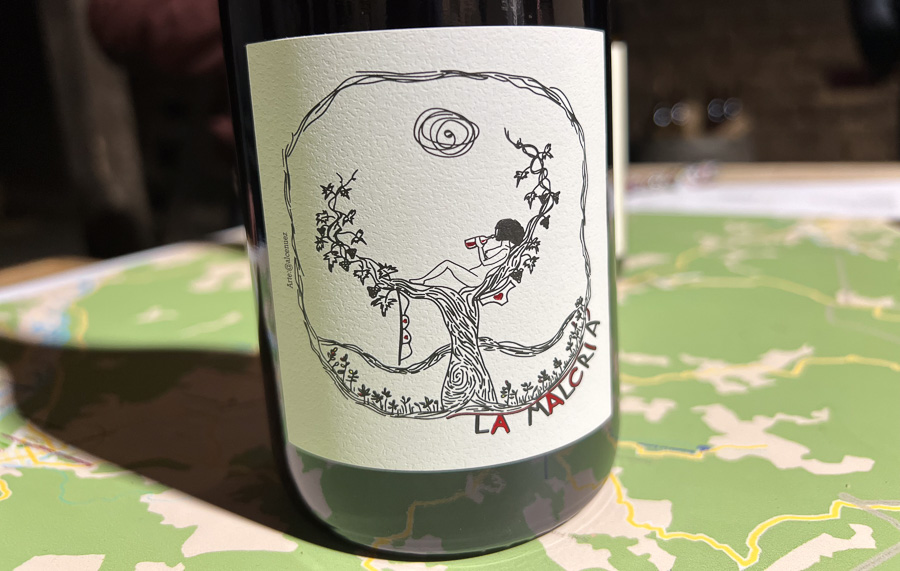
Malcría Cinsault 2021
Young vines planted in 2012, SSW exposition with more clay in the vineyard. 15 days in lagares then to old barrels. 12.9% alcohol. Aromatic and floral with supple, fresh cherry and raspberry fruit. Expressive and with good acidity, showing great purity. Nice sappy hints with real drinkability. 93/100 (800 bottles)
Tierra y Sangre
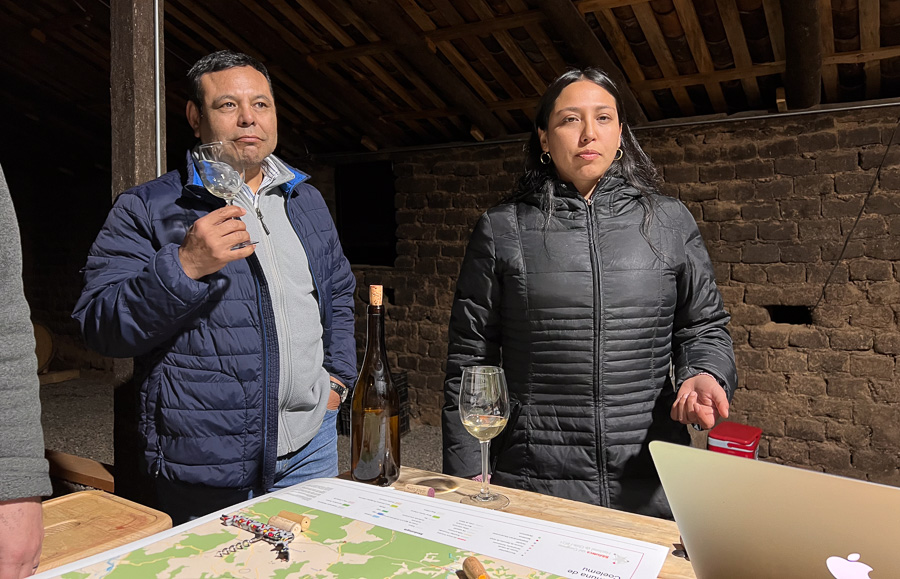
David Poblete and Consuelo Poblete (daughter) are the people behind this project. Consuelo is trying to revive the style made by her great grandmother. She has a different style from her dad, but they make the Semillon together.
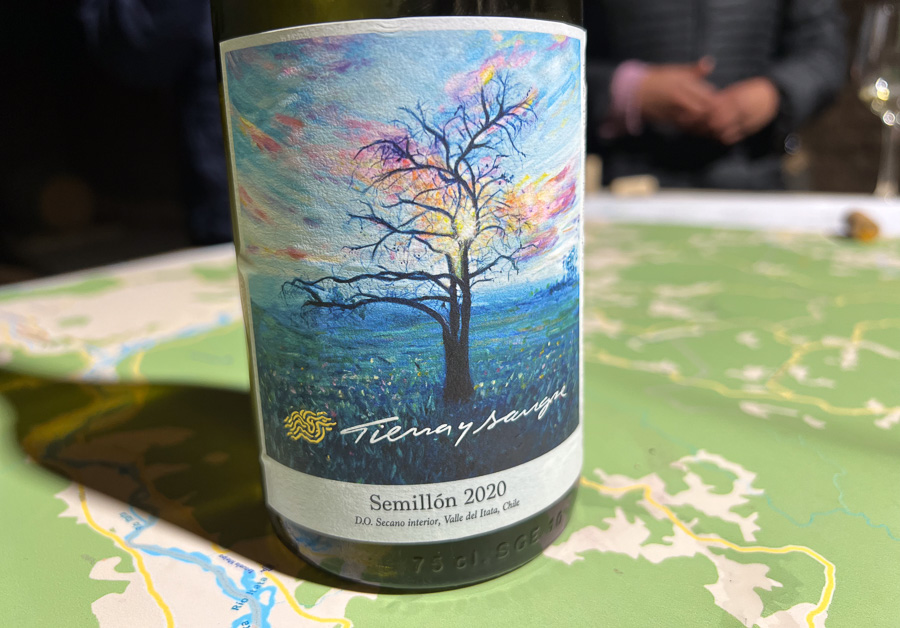
Semillon 2020
Stainless steel fruit. Bright and vivid with a chalky, earthy edge to the crisp citrus fruit. Some nice intensity here: bright and quite mineral. Lively with some herby hints. 91/100 (500 bottles made)
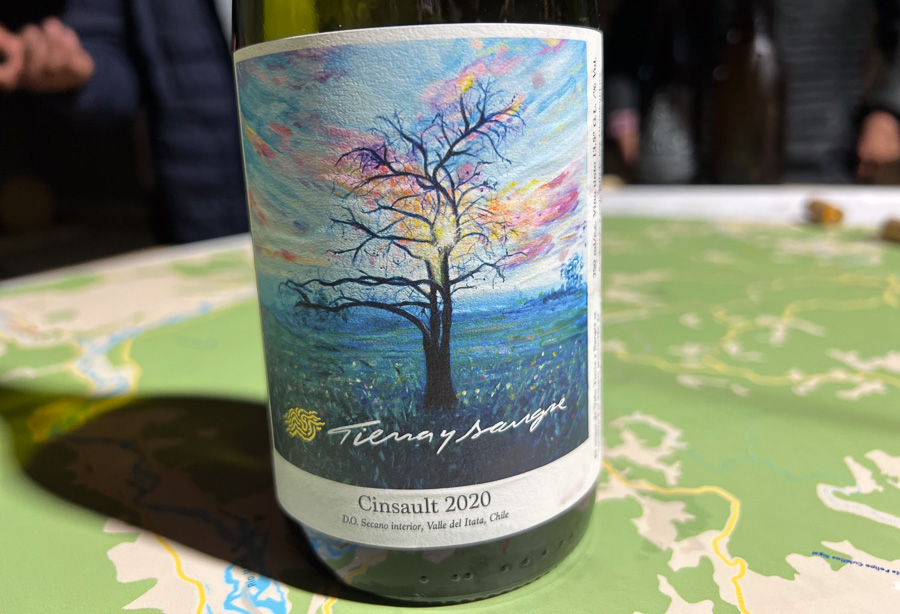
Cinsault 2020
13.5% alcohol. Barrels were renewed. Vivid and very fruity with cherry and raspberry fruit. Fresh and grainy with nice detail. This is the father’s wine. 90/100
The next two are Consuela’s own style
El Rito Olas Moscatel 2021
4 days skin contact, then fermented in stainless steel, then two months in barrels, no added sulfites. Fruity and aromatic with lovely table grapes and lime, as well as a hint of mint. Lovely purity and focus with some generosity. Such a nice wine. 92/100

El Rito Pais 2021
120 year old vineyard, no herbicides, 100% pais, stainless steel with 25% whole bunch. Fresh, sappy and stony with sweet cherry and plum fruit but there’s a bit of mouse here.
Viña La Kura

This is the project of Clara and Walter Arteaga.
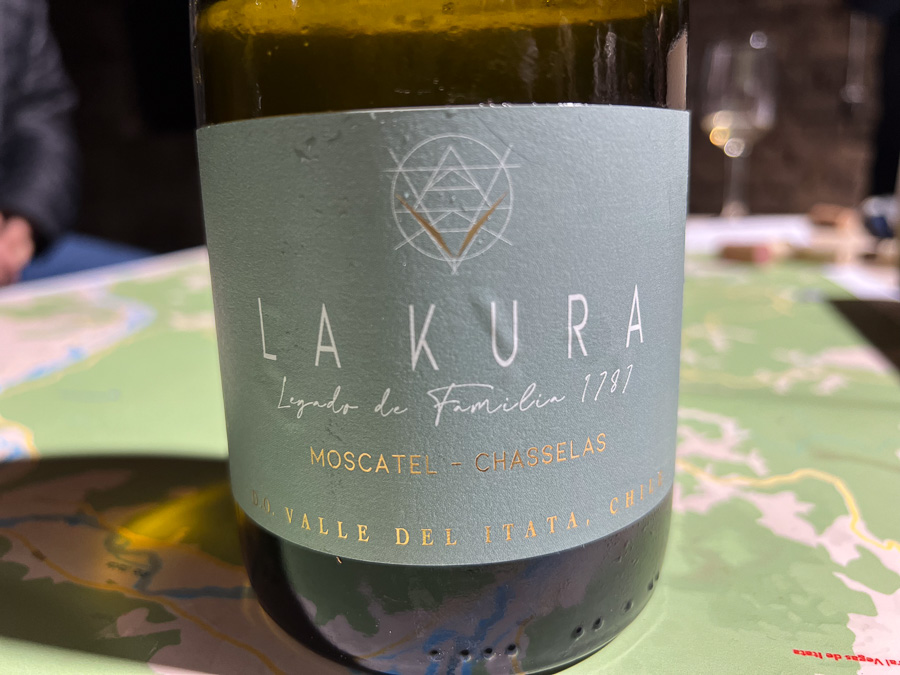
Moscatel Chasselas 2021
Also has a tiny bit of Riesling. 16 h on skins then fermented in stainless steel. Racked four times. Bottled after 6 months. Unfiltered. Taut, linear and quite pure with bright pear and citrus fruit as well as some grapey hints. Juicy and focused. Pure. 89/100
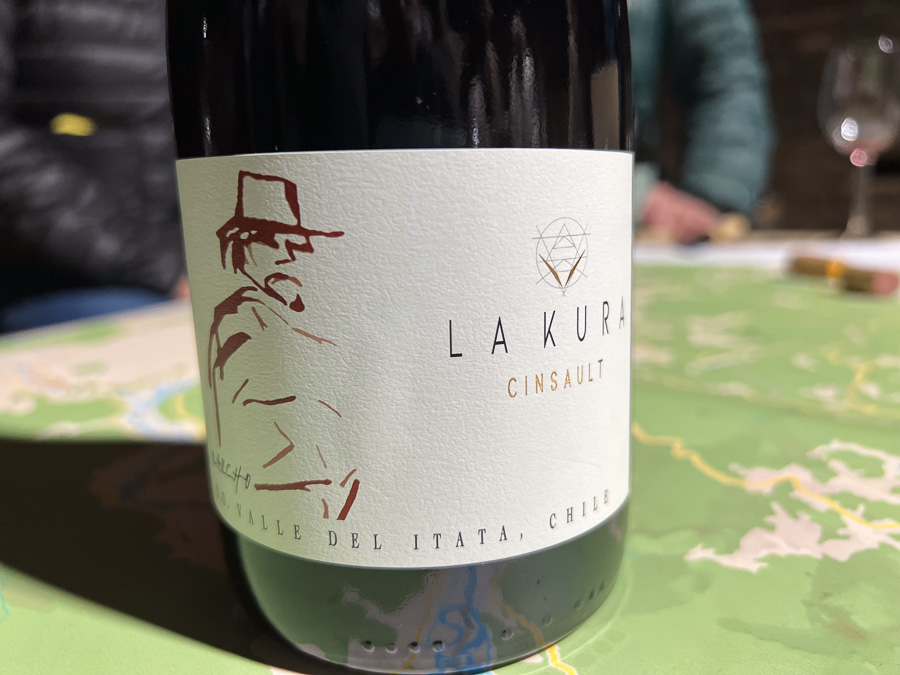
Cinsault 2022 (tank sample)
Fermented and aged in stainless steel. Vivid and juicy with bright cherry and plum fruit. Nice directness with lovely vivid fruit. Too early to judge but the fruit is really nice.
Ana María Cumsille
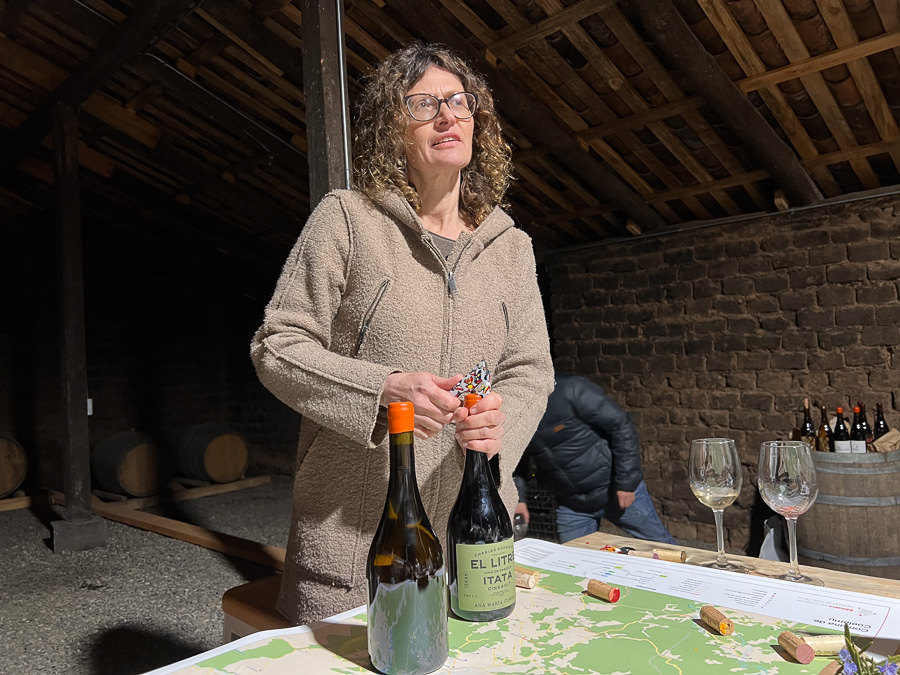
Ana Maía has been able to work with vines that are over 200 years old. She started her project and in the first vintage she made just País and Cinsault. She wants to put the focus on the growers, and names them on the label. Her first wine was 2020, but when she was working in Cuchacucha she made a high-quality line and then when they stopped she bought the Mezcla back from them.

El Litre Cinsault 2020
13.5% alcohol. In Tinajas with 50% stems, to avoid the sensation of sweetness in the wine and to add texture. Lasagne style with layers of stems and destemmed fruit. Aged in old barrels. This has good colour with cherry and raspberry fruit, showing nice texture and purity. There’s brightness here with real finesse and purity. Has a chalky, grainy structure with a tapering finish. Very stylish. 94/100

Pellines Mezcla Blanca 2018
Moscatel, Semillon and Torontes, 12% alcohol. 8 months skin contact in stainless steel, then 4.5 years in oak. This is rich and complex with powerful apple, spice and pear, as well as some almond. There’s some honey and nut character, too, with great acidity. Crystalline with keen acidity and some citrus and spice. Has real intensity, showing some subtle oxidative hints but also amazing acidity and precision, finishing a little saline. A remarkable wine. 96/100 (700 bottles)
Trifulca
Cristian Lagos is behind Trifulca. The idea is to rescue what his parents were doing. Since 2014 has decided to start bottling his own wines.

Trifulca Cinsault 2019
Nice density here with good structure, but the emphasis is on the bright, expressive cherry and plum fruit with a touch of fresh raspberry. Lovely juiciness and intensity: fresh and vivid. This is really good. 92/100
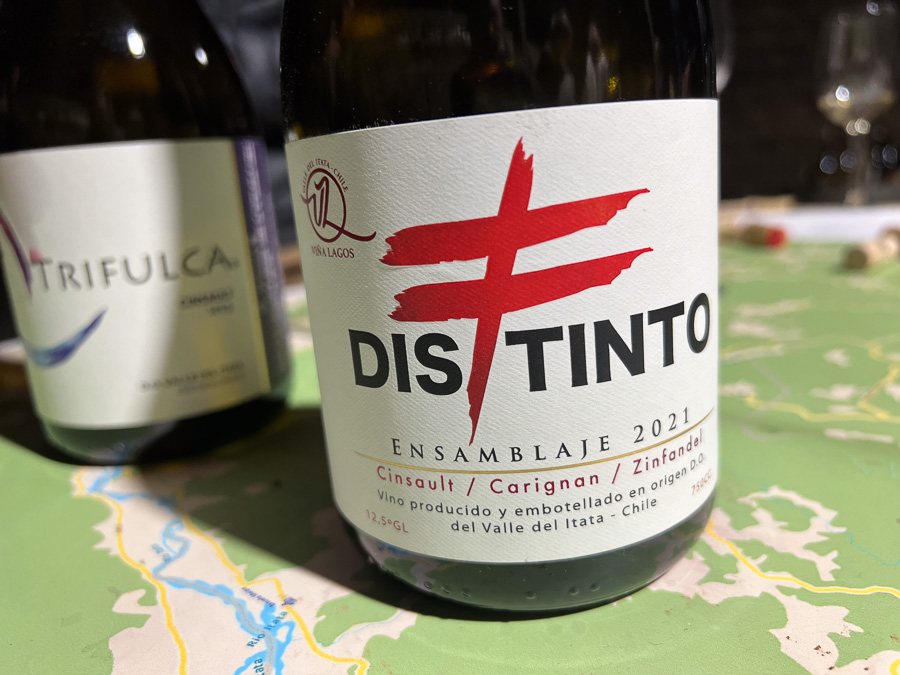
Distinto Ensamblaje Cinsault Carignan Zinfandel 2021
Juicy, bright, crunchy and vivid with nice plummy fruit. Has raspberry and cherry with nice fruit. Ripe fruit but nicely balanced. Lovely supple fruit with nice tartness on the finish. Lovely balance here with a juicy quality. 92/100
Gonzalo Castro
Gonzalo started in 2015 with his wife, making small quantities of wine. In 2010 when he worked with San Pedro he was looking for new places to make wine, and produced Los Desperidos with Cinsault and País.
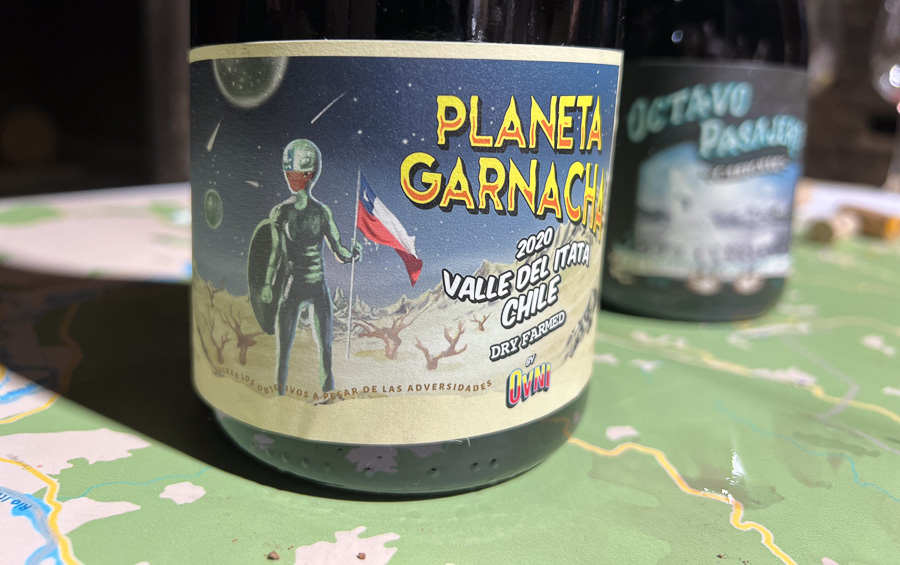
Planeta País 2022 (final blend in tank)
Made in concrete lagar, 50% whole cluster, then in concrete. This is bright and juicy with some herbal hints and lovely direct fruit. Very expressive and tensile, with good structure and some tannins. Very primary with a firm grippy finish and good acidity. So vital and pure. 91-93/100
Planeta Garnacha 2020
Garnacha grafted onto Pais. 100% whole bunch. Taut and fresh with red cherries and plums and nice grip. This is tart and quite tannic. Lovely grainy structure with direct berry fruits. Primary and focused. 92/100
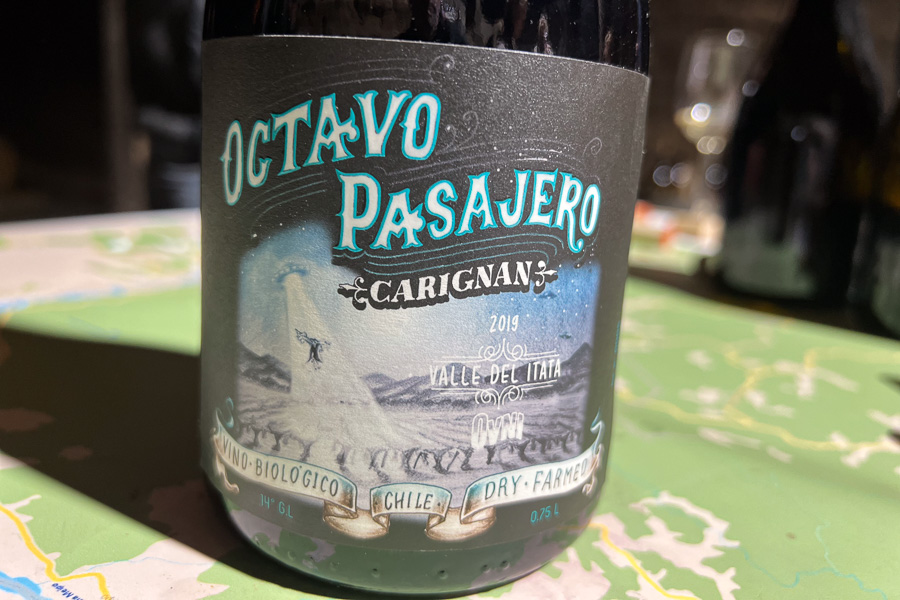
Octavo Pasajero Carignan 2020
Fresh, intense and aromatic on the nose. Vivid with lovely bright raspberry and cherry fruit, with a bit of grip. There’s some flesh here, as well: sweet, floral fruit with nice presence and fruitiness. Such a lovely focus here, with some creaminess. 93/100

